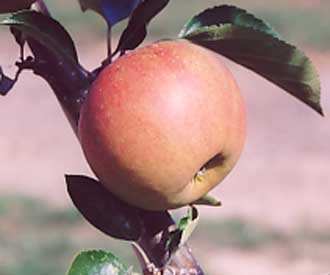Autumn 2025 / Winter 2026 seasonWe still have plenty of trees left for the winter planting season, but it is best to order ASAP.
Keepers NurseryThe UK's largest range of fruit trees
Tel. 01622 326465
Cox's Orange Pippin
Regarded as the finest of English apples with an intense aromatic flavour rarely matched by any other.
Origin: Buckinghamshire UK, 1825
Pollination: Cox's Orange Pippin is self-sterile and would require a pollinator to produce a crop.Find pollination partners >
British-grown  All our bare-root trees are personally hand-grafted by our Nursery Manager and grown on at our nursery in Kent. We have Defra and Plant Healthy certification.
More ...
All our bare-root trees are personally hand-grafted by our Nursery Manager and grown on at our nursery in Kent. We have Defra and Plant Healthy certification.
More ...
Try these similar varieties
History and description of Cox's Orange Pippin
Cox's Orange Pippin was raised by a retired brewer called Richard Cox at Colnbrook Lawn, Slough, Buckinghamshire, UK c 1825. Believed to have been a Ribston Pippin seedling. Introduced by Smales & Son, Colnbrook c 1850. Was first grown commercially c 1862 by Thomas Rivers in Hertfordshire. More extensive planting around London and in Kent followed until disease problems led to its decline in the early 1900's. Commercial planting was revived after the introduction of lime sulphur sprays in 1920's. It has since become the most widely grown dessert variety in the UK. It is also grown in NewZealand and continental Europe. Received an Award of Merit and a First Class Certificate from the RHS in 1962.Medium sized, round conical fruit. Greenish yellow skin ripening golden yellow covered with orange-red flush and broken stripes. Some small russet patches. Firm, juicy, cream flesh. Sweet but with plenty of balancing acidity. Intensely aromatic, complex flavour. Regarded as the finest of English dessert apples. Flavour improves with storage but loses its crispness if stored for too long.
Moderately vigorous tree. Rather susceptible disease. Unsuitable for colder and more humid regions, or for organic cultivation. A very difficult variety to grow. Less experienced gardeners would be well advised to substitute Cox with alternative varieties such as Sunset or Ellison's Orange which are much easier to grow.
Characteristics of Cox's Orange Pippin apple trees
Varieties you viewed








